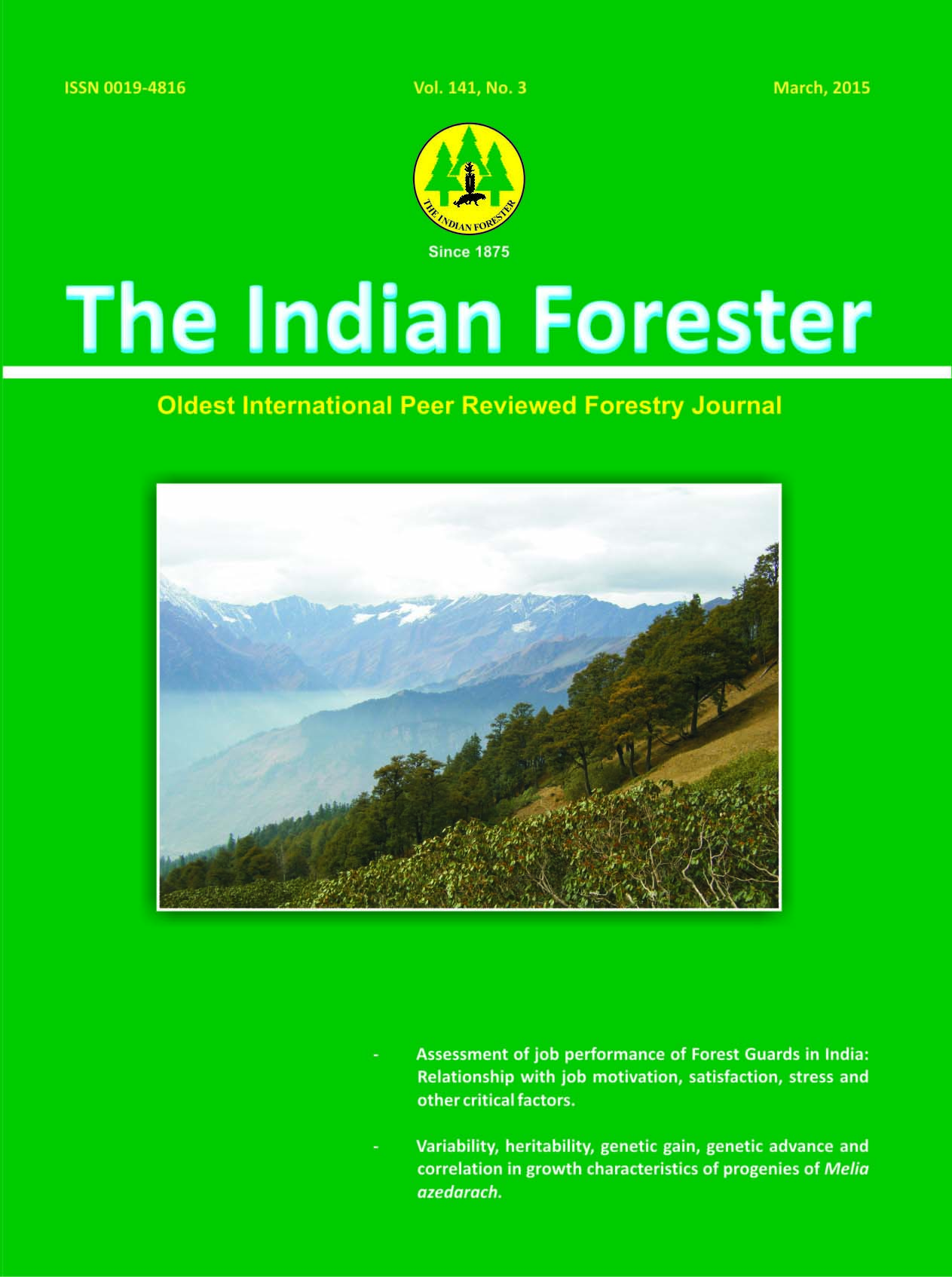Tree Planting Constraints in Traditional Agroforestry Practices in Dry Lands of Sub Montane North Western Himalayas
DOI:
https://doi.org/10.36808/if/2015/v141i3/63827Keywords:
Agroforestry Practices, Dry Lands, North Western Himalay.Abstract
The specific objective of the study was to describe the socio-economic characteristics of the stakeholders in sub montane North Western Himalayan dry lands, identify the different agroforestry practices prevalent in the area, the types of trees commonly planted by the farmers along with their uses, perception of farmers about agroforestry and the constraints faced by the farmers in planting trees. A sample of 180 randomly selected respondents from 4 blocks of district Samba viz., Vijaypur, Samba, Gaghwal and Parmandal were interviewed through a pre-structured interview schedule in person and the data so collected were analyzed using statistical software to draw conclusions. The average household size consisted of 7 people with an average age of 53 years. Boundary plantation (39.4%) was the major agroforestry practice, followed by scattered planting (35.0%), block planting (15.6%) and intercropping (10%). Tree components in the area included horticulture and forest tree species. The socio economic and ecological benefits derived by farmers from the planted trees and the major constraints faced by farmers have been drawn.References
Acharyya S.K. (1994). The Cenozoic Foreland basin and tectonics of the Eastern Sub-Himalaya: Problems and prospects. In: Siwalik Foreland Basin of Himalaya. Himalayan Geology 15 (Kumar, R. and Ghosh S.K. Eds.), New Delhi: Oxford & IBH Publishing Co. Pvt. Ltd
Chaturvedi D.P. and Das D.K. (2002). Effect of bund trees on soil fertility and yield of crops. Range management and Agroforestry, 23:90-94
Grewal S.S., Mittal S.P. and Singh G. (1990). Rehabilitation of degraded lands in the Himalayan foothills: People's participation. Ambio, 19(1):45-48
IUFRO. (2004). Trees, Agroforestry and Global change in Dryland Africa (TACCDA). In: Proceedings from VITRI/ETFRN/IUFRO workshop, 31 July-4 August 2003, Hyytiala, Finland.
Kramer P.J. and Kozlowski T.T. (1979). Physiology of woody plants. New York: Academic Press
Madiwalar S.L., Channabasappa K.S. and Deshmukh R.C. (2007). Survey and Documentation of agroforestry models in Bidar, Gulbarga and Raichur Districts. Karnataka Journal of Agricultural Science, 20(1): 93-95.
Rao M.R., Nair P.K.R. and Ong C.K. (1998). Biophysical interactions in tropical agroforestry systems. Agroforestry Systems, 38:3-50.
Sanchez P. (1995). Science in agroforestry. Agroforestry Systems, 30:5-55.
Sevare M.N., Bernaldez S.O., Harrison S., Herbohn J. and Mangaoang E.O. (2006). Attitudes related to forestry and agroforestry of smallholder tree farmers on Leyte Island. In: Improving the Triple Bottom Line Returns from Small-scale Forestry (S Harrison, A Bosch and J Herbohn Eds), Proceedings of the International IUFRO 3.08 Conference, 17-22 June 2007, Sabin Resort Hotel, Ormoc City, Leyte, pp. 335-340
Zubair M. and Garforth C. (2006). Farm level tree planting in Pakistan: the role of farmers' perceptions and attitudes. Agroforestry Systems, 66:217-229
Downloads
Downloads
Published
How to Cite
Issue
Section
License
Unless otherwise stated, copyright or similar rights in all materials presented on the site, including graphical images, are owned by Indian Forester.





